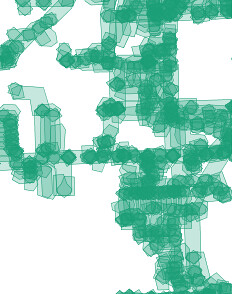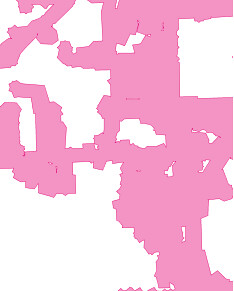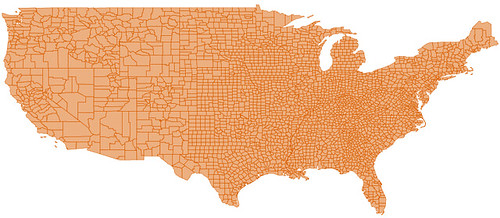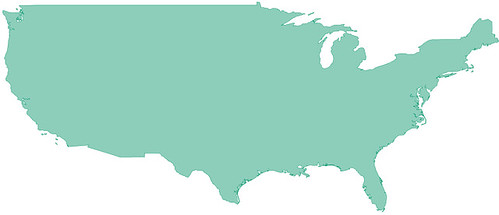(Much) Faster Unions in PostGIS 1.4
23 Jan 2009Originally posted at GeoSpeil.
I have had a very geeky week, working on bringing the “cascaded union” functionality to PostGIS.
By way of background, about a year ago, a PostGIS user brought a question up. He had about 30K polygons he was unioning and the process was taking hours. ArcMap could to it in 20 minutes, what was up? First of all, he had an unbelievably degenerate data set, which really did a great job of exposing the inefficiency of the PostGIS union aggregate. Second, the union aggregate really was inefficient.
This is what his data looked like, before and after union.


The old PostGIS ST_Union() aggregate just naively built the final result from the input table: union rows 1 and 2 together, then add row 3, then row 4, etc. As a result, each new row generally made the interim polygon more complex — more vertices, more parts. In contrast, the “cascaded union” approach first structures the data set into an STR-Tree, then unions the tree from the bottom up. As a result, adjacent bits are merged together progressively, so each stage of the union does the minimum amount of work, and creates an interim result simpler than the input components.
Implementing this new functionality in PostGIS required a few steps: first, the algorithm had to be ported from JTS in Java to the GEOS C++ computational geometry library; second, the C++ algorithm in GEOS had to be exposed in the public GEOS C API; third, PostGIS functions to call the new GEOS function had to be added.
The difference on the test data set from our user was stark. My first cut brought the execution time in PostGIS from 3.5 hours to 4.5 minutes for the sample data set. That was excellent! But, we knew that the JTS implementation could carry out the same union on the same data in a matter of seconds. Where was the extra 4 minutes going in PostGIS? Some profiling turned up the answer.
Before you can run the cascaded union process, you need to aggregate all the data in memory, so that a tree can be built on it. The PostGIS aggregation was being done using ST_Accum() to build an array of geometry[], then handing that to the union operation. But the ST_Accum() aggregation was incredibly inefficient! Four minutes of overhead isn’t a bit deal when your union is taking hours, but now that it was taking seconds, the overhead was swamping the processing.
Running a profiler found the problem immediately. The ST_Accum() aggregate built the geometry[] array in memory, repeatedly memcpy()‘ing each interim array. So the array was being copied thousands of times. Fortunately, the upcoming version of PostgreSQL (8.4) had a new array_agg() function, which used a much more efficient approach to array building. I took that code and ported it into PostGIS, for use in all versions of PostgreSQL. That reduced the aggregation overhead to a few seconds.
Final result, the sample union now takes 26 seconds! A big improvement on the original 3.5 hour time.
Here’s a less contrived result, the 3141 counties in the United States. Using the old ST_Union(), the union takes 42 seconds. Using the new ST_Union() (coming in PostGIS 1.4.0) the union takes 3.7 seconds.





